From the Archive: Doug Ohlson at MoMA PS1’s 1976 Rooms Exhibition
From the Archive: Doug Ohlson in MoMA PS1’s Rooms, 1976
From the MoMA website:
For P.S.1’s inaugural 1976 exhibition, Rooms, founding director Alanna Heiss aspired to assemble “the most powerful installation art under one roof” at a time when no museums and very few galleries were showing such work. Heiss let 78 artists loose in the former school building, with the artists inhabiting every available space of the crumbling structure: they installed works not only in empty classrooms, but in stairwells, closets, and bathrooms, as well as the attic, courtyard, and boiler room.
Many of these interventions used the building itself as material. Gordon Matta-Clark cut vertically aligned rectangular openings through three floors; Doug Wheeler tweaked the lighting of a corner classroom by tinting or even entirely removing window panes; Daniel Buren modified P.S.1’s windows, superimposing white stripes on several dozen in a top-floor auditorium, where Jennifer Bartlett’s enamel abstractions occupied a wall nearby.
On the roof, Richard Serra embedded a steel sculpture in the attic’s floor, and Charles Simonds created one of his signature “dwellings,” a clay diorama whose miniature structures fused with the view of the Manhattan skyline behind it.
Some works could be seen without ever needing to enter the building: Alan Saret chiseled a cavernous hole into P.S.1’s exterior, and Marjorie Strider created a massive pour of technicolor latex foam that cascaded down the courtyard facade from third-floor bathroom windows to the parking lot.
Pictured above, clockwise: October 1976 ArtForum cover featuring MoMA PS1’s inaugural exhibition, Ohlson’s “Australia 1971,” Lynda Benglis’s installation spilling out onto the PS1 courtyard, group photo of 56 of the 78 exhibiting artists, Jennifer Bartlett’s “Drawing and Painting,” and John Baldessari’s "Alignment Series: Disaster Story Line (Getting it Straight).”
News: Doug Ohlson featured in All in Together, Washburn Gallery, New York, March 30 – May 27, 2023
News: Doug Ohlson featured in All in Together at Washburn Gallery, NY
March 30 – May 27, 2023
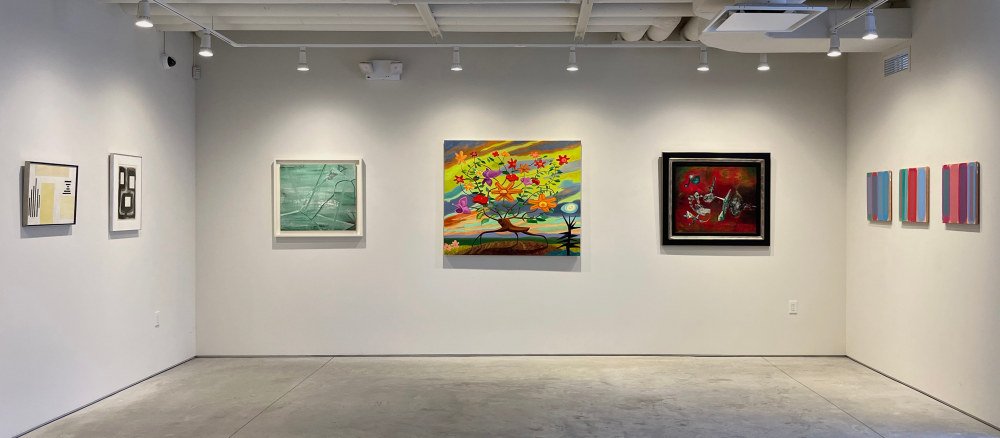
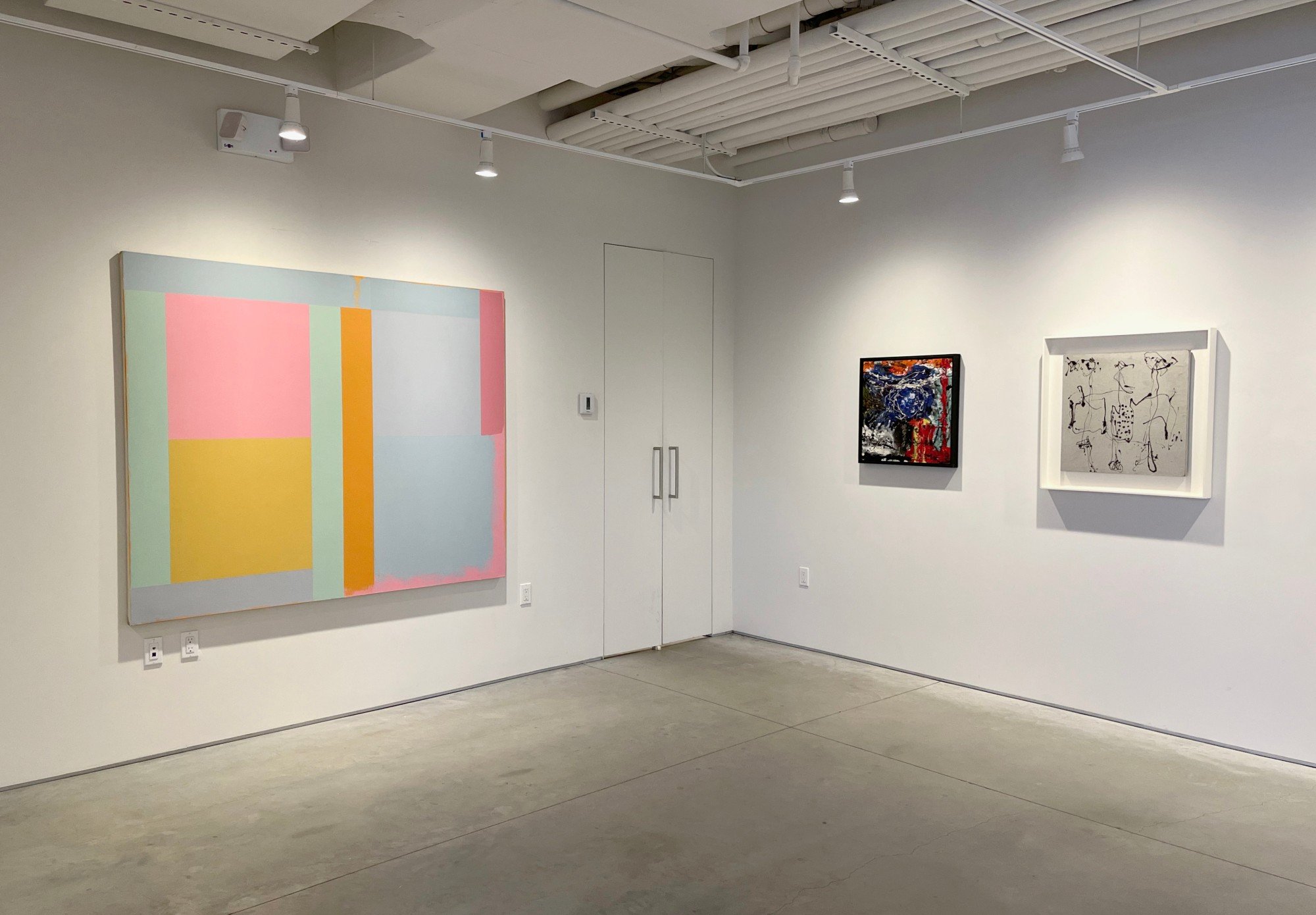
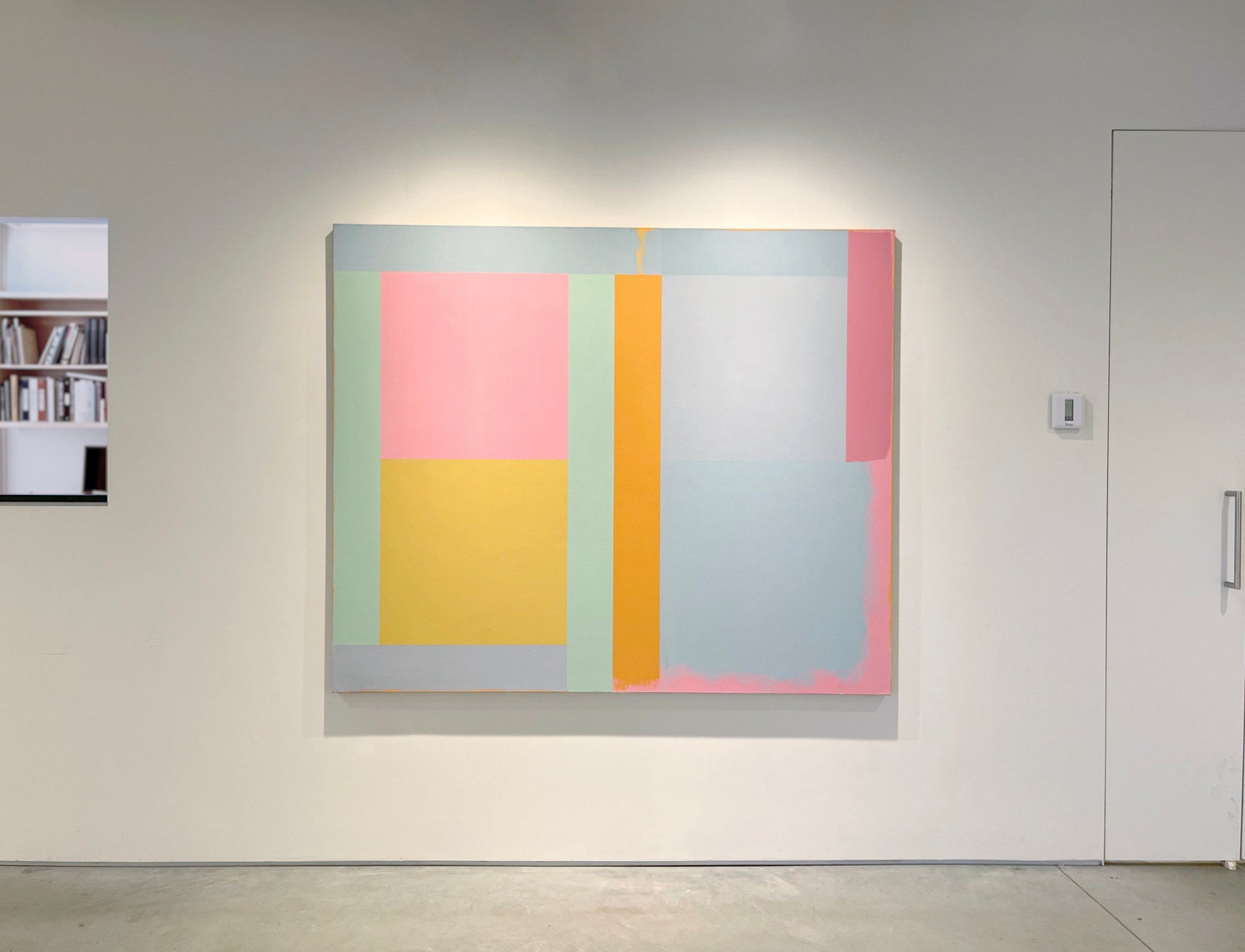
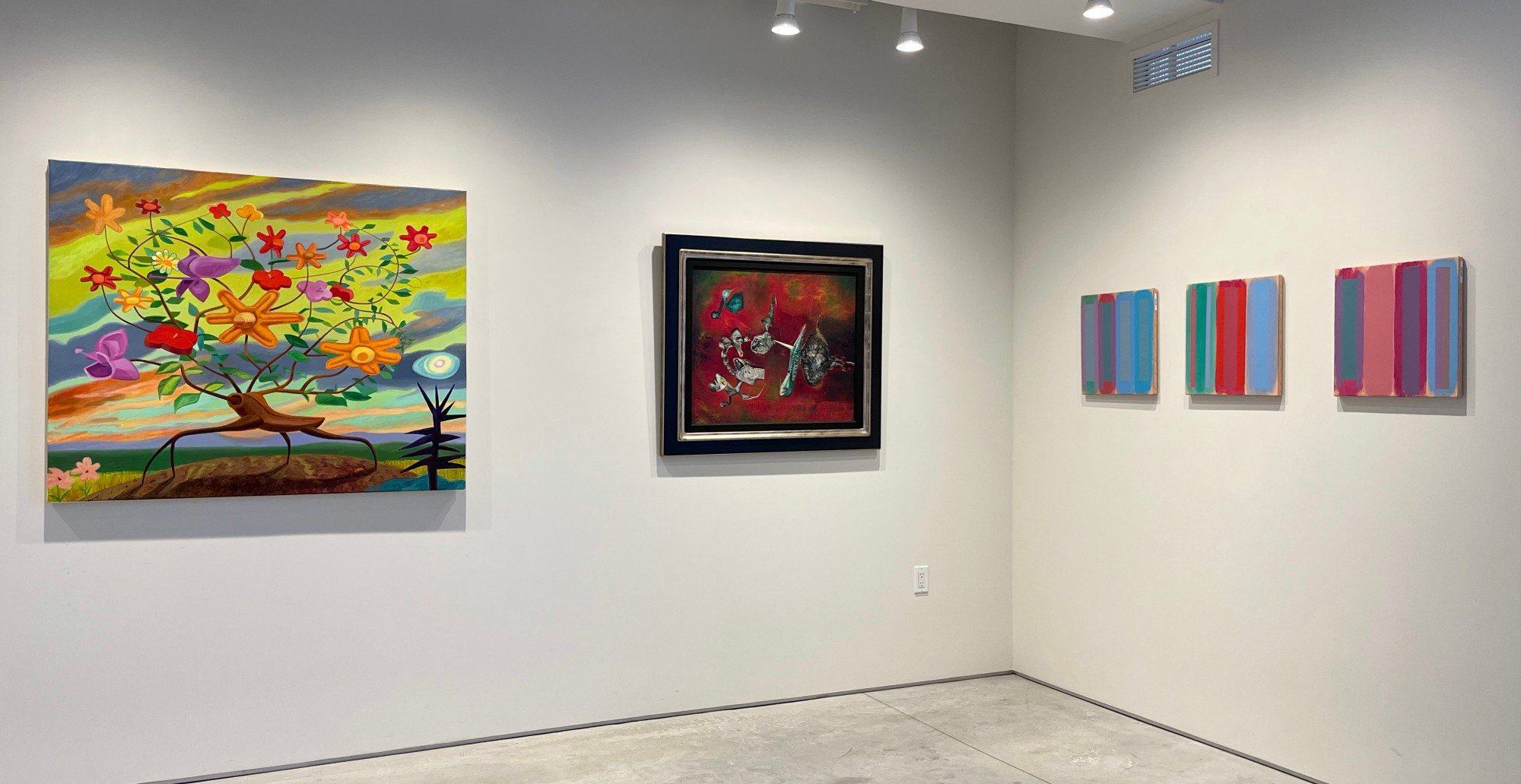
The Washburn Gallery unites in one room a selection of paintings, sculpture, collages and works on paper by eleven artists - all in together.
ILYA BOLOTOWSKY
CLAUDE CARONE
JOANNE CARSON
ENRICO DONATI
ALICE TRUMBULL MASON
DOUG OHLSON
ALFONSO OSSORIO
RAY PARKER
JACKSON POLLOCK
ANNE RYAN
RICHARD STANKIEWICZ
News: Doug Ohlson: Paintings from the 1990s at Washburn Gallery, New York, February 2 – March 25, 2023
News: Doug Ohlson: Paintings from the 1990s at Washburn Gallery, New York, February 2 – March 25, 2023
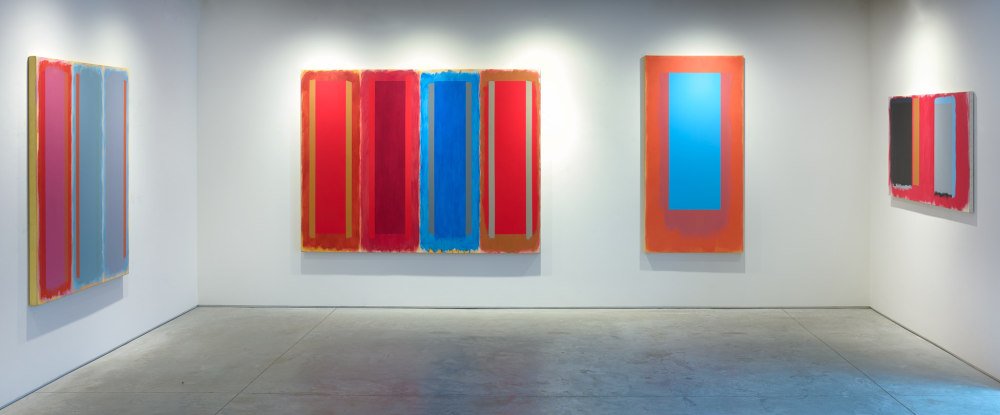
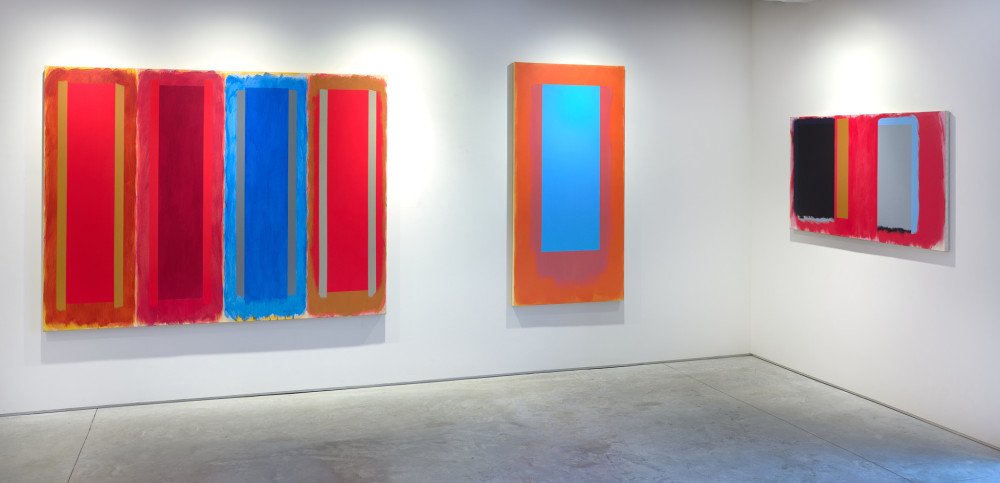
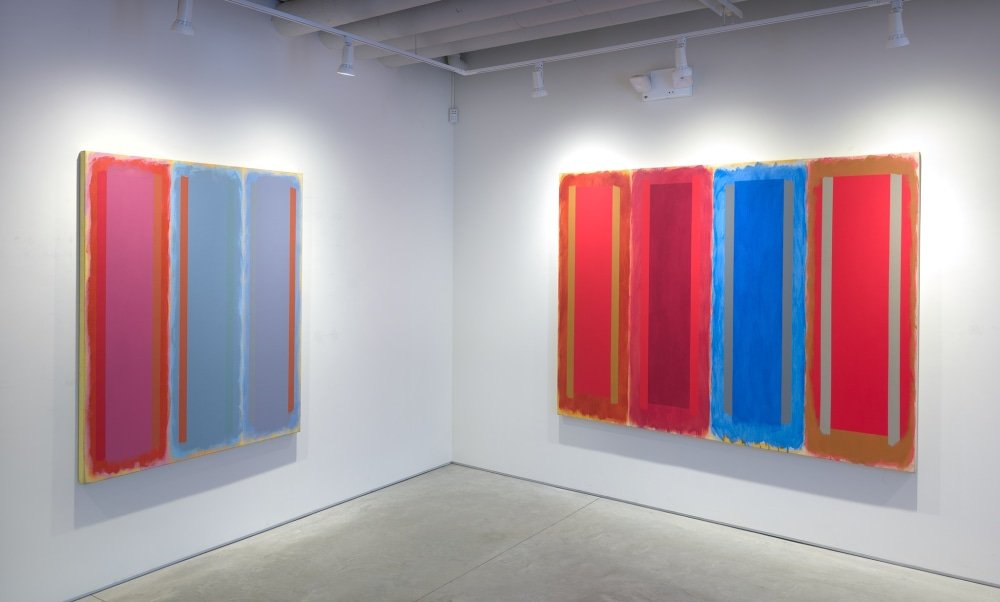
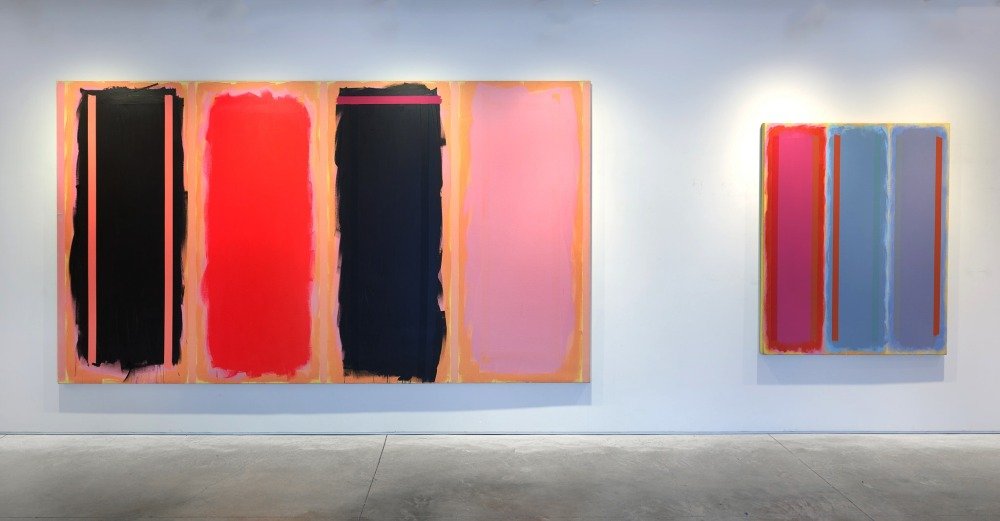
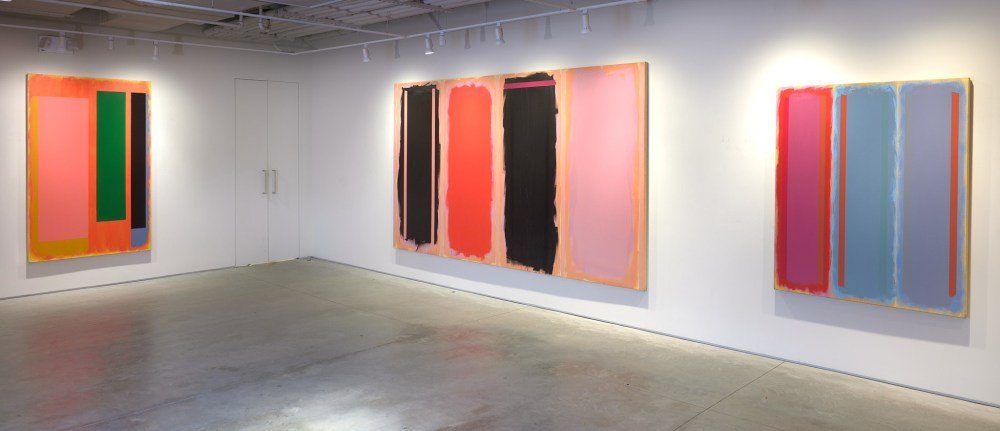
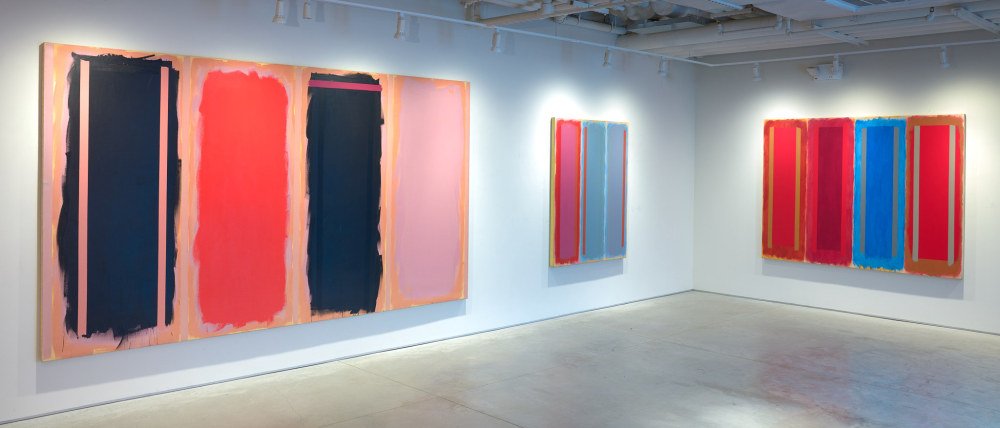
Michael Brennan on Doug Ohlson, prepared for Paintings from the 1990s:
I was in my late twenties when I met Doug Ohlson, a few years out of MFA, and just past my second one person exhibition. I knew Doug’s painting historically, from reading Gregory Battcock’s anthology Minimal Art, published in 1968, which included a ridiculously tiny, halftone, reproduction of Ohlson’s large, impressive, and important early painting, Sparrow’s Red Rose, 1966. This was something I studied closely. I saw a real Ohlson painting not long afterwards, large and horizontal, color blazing, through the window of his Soho gallery, on my way to Pearl Paint. I called Doug. My timing was fortuitous because he’d just broken his ankle—hence, Broken Ankle Bastard Ptg., 1994-95, and he hired me, over his dial phone, giving me a list of supplies to bring over to his Bond St. studio.
We fell into each other’s lives immediately. I was one of Doug’s assistants for a few years afterwards. Doug was a great friend and mentor to me. His presence marked a great, positive, turning point in my life. I learned so much from Doug about being a person and painter, but that’s not what I’m writing about right now.
Despite his broken ankle, Doug was quickly back on his feet. I worked with him on many of the paintings in this exhibition, but my role was minimal. Doug did all of the real work himself. I was mostly there as an extra set of hands to help out with two person jobs—moving larger paintings around the studio, stretching canvas across his colossal working stretchers, cutting finished canvases down from them, and stretching the paintings onto their final, presentation, stretchers afterwards. We stretched and restretched paintings a lot. Doug called this “fine tuning”. I mostly came by in the mornings, helping to set up for the day. Then we’d have a long leisurely lunch with stewed food from the Great Jones Diner, often talking about painting for a few hours. I left in the afternoon, and in my absence, Doug would do the real work of painting. I was always surprised by what I saw when I returned to the studio next. Doug was always preoccupied with painting. He kept all manner of painted color swatches, his own painted samples, around him at all times, endlessly considering their potential, adjusting their color, contemplating them, mixing color, painting, observing. Truthfully, that was the hard work behind Doug’s painting, and the secret of their great success. You’ll never find a stock color contrast in any Doug Ohlson painting. Paintings like Nemesis and Pairs bear the formal imprint of Barnett Newman’s Treble, 1960, but this was just a skeletal structure, something Doug would likely call a “color container”. It’s Ohlson’s unusual color combinations that animate these paintings, that creates their multidi-rectional musicality. Ohlson brought full orchestration to Newman’s singularity. Doug, who clearly had a fondness for symmetry, used to speak about the importance of intentionally alternating rhythm, bringing in a kind of arrhythmic beat, or stomp, once in a while to keep repeated forms from becoming static. This was a lesson in the use of asymmetry he formulated from studying Jackson Pollock’s Portrait and a Dream, 1953.
For me, a particular standout in this deft group is Prequel, 1994. Prequel hung about the center of Doug’s studio for a couple of years, facing outwards, as if waiting for another pass of paint. The simultaneous contrast here is extremely striking, with color flaring from every edge, internal and external. Prequel felt like a kind of portal, both solid and void, occupying the core of Ohlson’s spacious studio. Doug was a minimalist, but Prequel is extremely minimal even by Doug’s standards. Doug kept it around, ready, waiting, inclined, but he never reentered that painting. Another aspect of Doug’s genius was that he intuitively knew well enough when to leave something alone, a real indicator of maturity. Prequel is a singular as anything by Barnett Newman, but entirely of Doug Ohlson, perhaps containing a spiritual echo of Ohlson’s own mentor, Tony Smith. I’m happy to be haunted by its presence again.
This period in the mid-90’s was at the beginning of a great late surge in Ohlson’s painting. I’m not sure minimal, modernist, painting such as this could be properly appreciated, immediately, in that recent age of installation art, but like many artists of a previous generation, say Norman Bluhm, Mike Goldberg, or Joan Mitchell—so-called “Second Generation” Abstract Expressionists—Ohlson was making some of his best work outside of the historical era that had previously defined him. Doug made many of his best paintings in the 1990’s, and later. Let this current revisitation, this 2023 exhibition, begin an overdue period of reevaluation. When one is in the presence of Prequel, a title that suggests the story before the story, no dates matter.
Doug Ohlson, Painter of Vivid Abstracts, Dies at 73
Doug Ohlson, Painter of Vivid Abstracts, Dies at 73






